How to Reduce the Echo in Your Home Office (Remote Work Tips)
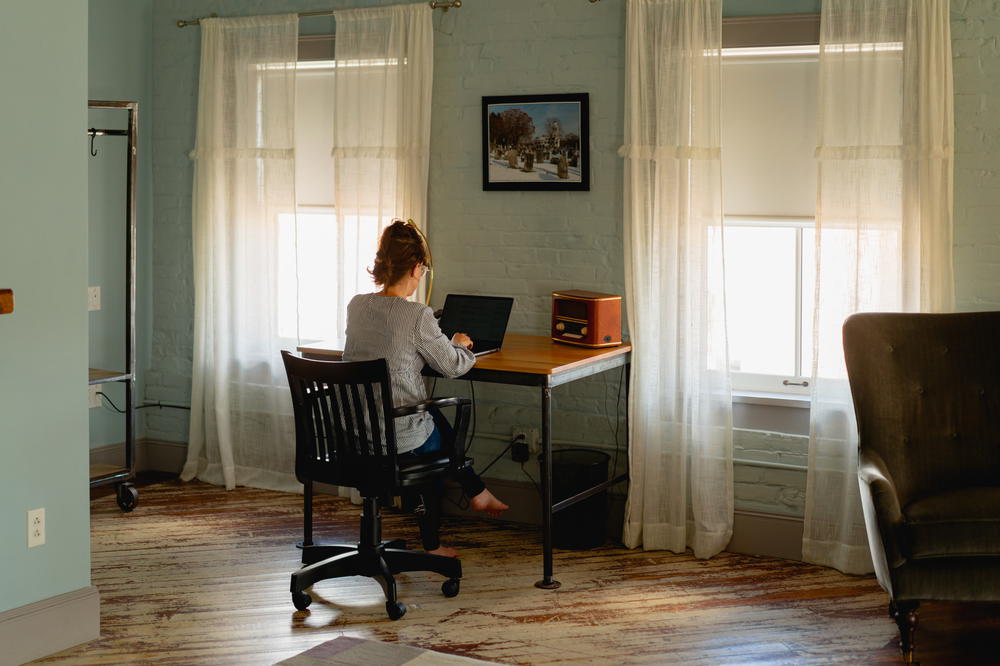
What are some easy and cheap ways to get rid of the echo in your home office? Let’s fix your workspace echo problem, whether caused by floors, high ceilings or a small room.
This article may contain affiliate links. We earn a small commissions when you purchase via those links — and it's free for you. It's only us (Becca & Dan) working on this website, so we value your support! Read our privacy policy and learn more about us.
When I started working from home full-time in the beginning of 2020, I was in a small apartment in Brooklyn. I took the living room and added a bigger desk and set up a primary monitor, keyboard and mouse. My wife Becca took the bedroom as her home office, and we bought a new smaller desk to shimmy into a smaller corner.
We both utilized our “actual” living room to work from the couch or the kitchen table to switch up our daily routine, as well. It was a small NYC apartment home office setup for sure.
It never crossed our minds that a larger room could have an echo because our small living space had plenty of blankets, carpets and curtains. We also had exposed brick and the apartment was too small to produce a peep of an echo.
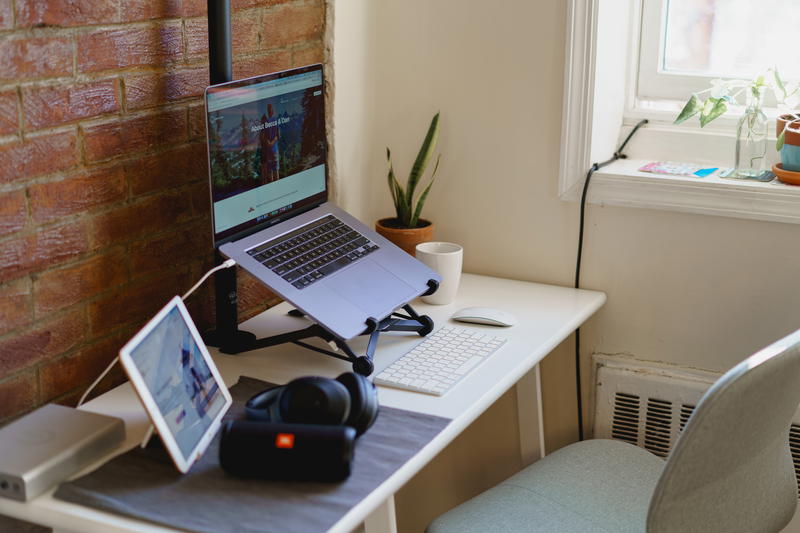
We’ve since moved into an apartment with a second bedroom. This space acts as an office for us and we maintain our living room as an “actual” living room! Once I took my first meeting in the second-bedroom-turned-home-office, I instantly realized that there was a bad echo. Oh no!
Plus, when Becca and I are both working from home, we can hear each other really easily between the doors because the walls are much thinner than in our last apartment. It’s not ideal, but we live here now and it is what it is.
Let’s explore some of the ways that I’ve tried to fix the echo issue in the home office in my apartment, and some of the things that I’m planning on trying in the future.
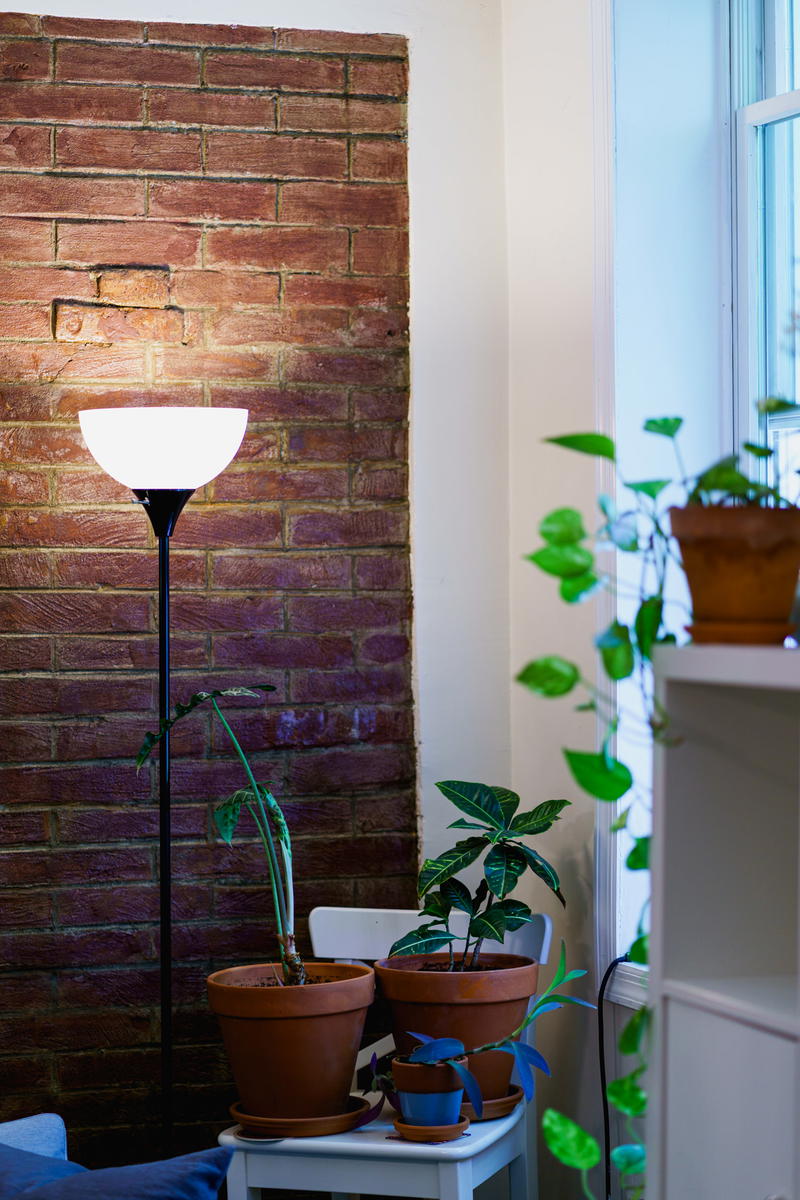
Get a rug or carpet
A rug is probably one of the easiest and most effective thing that you can do. Our last apartment had a high-pile rug that did an excellent job of dampening the sound and reducing the echo.
In our new place, we decided to get low-pile rugs because they are easier to clean. I don’t believe they do as good of a job with reducing the echo.
I would be interested in trying a carpet pad to keep under the rug. That would help make the carpet feel more cushiony and would add extra fabric within the room. This would (I think) absolutely help with the overall sound quality.
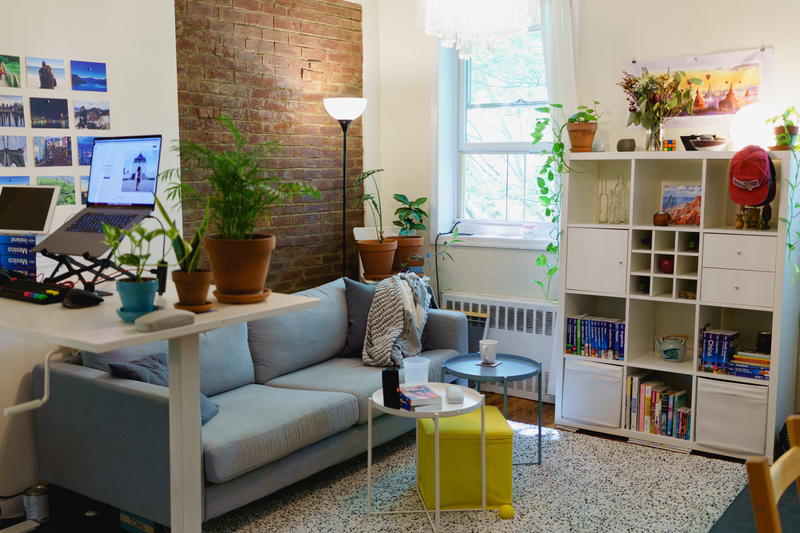
On rug sizing, don’t get a 5’x7’ rug if you have a large room to fill. Don’t get a rug too big, either.
My best advice for an area rug is that you should allow for plenty of walking room around the area rug. I had looked up rug placements on Pinterest, and that really helped.
The rug should also be positioned so that the feet of whichever furniture it is under are right under the edge of the rug.
If your rug is under your desk, you may have to leave enough clearance so that you can freely slide your chair in and out of your desk without catching the edge of the rug.
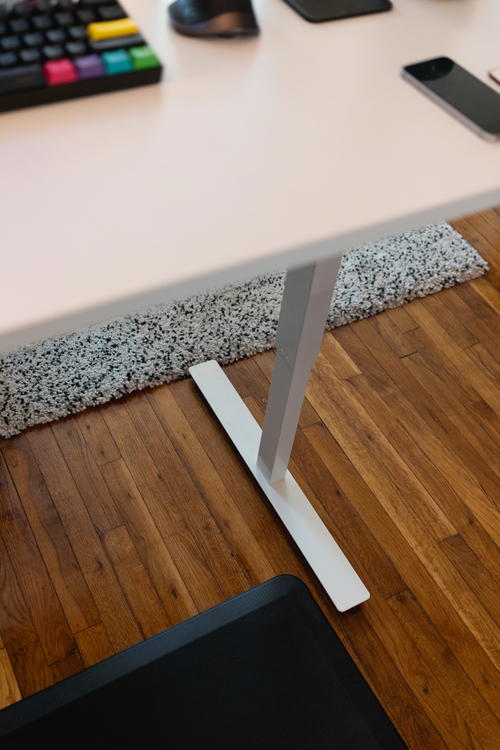
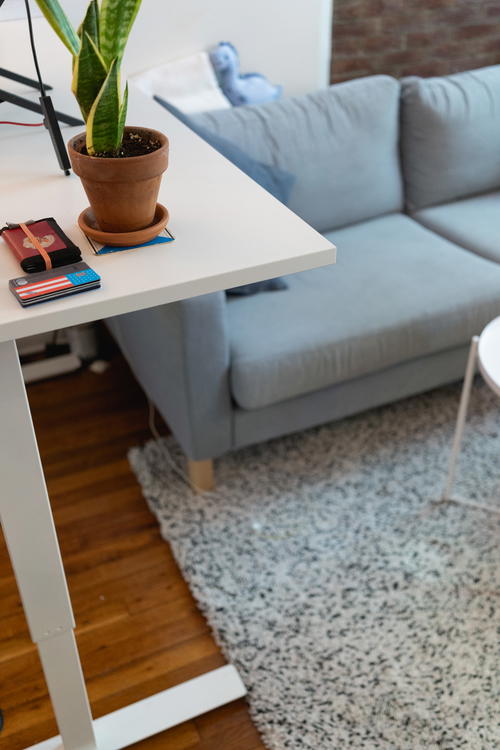
Overall, getting a rug helps dampen out the echo created by tile, wood, wood veneer or stone floors. Check out some of our ideas for rugs here, as well as our Quince rug review (we really like our rug from Quince).
Install curtains or replace existing blinds
Some windows have hard plastic or other hard material used as window blinds. The hard window surface, in addition to the hard blinds, is never going to help the echo situation. Plus, in our new apartment, our windows are big.
Hanging simple curtains is a great way to add additional material to help dampen the sounds that would create echos during meetings. You will want to continue to add layers of material for decreasing echoes, and window curtains are a great first start.
Currently, I have not done this and this will be the next thing that I try.
Get more furniture
If you can, add couches, chairs, baskets for blankets and bookcases. These pieces of furniture are great ways to fill in and fill out your home office. This furniture will help you decorate your office, as well. We pretty much swear by the brands we mention in the article we wrote about finding affordable furniture for your home.
I like the idea of getting a couch and sitting in a chair for a home office, because it gives you additional places to work from. I can never sit at a desk for eight hours. I need to move around.
I will come out to the living room and work from the couch. If I had a couch in my office, I would probably sit there more often to allow for more separation between work and living spaces. (Note: working on a couch is bad for your neck and back, so do this at your own risk, because we often advise against it for ergonomic reasons!)

I unfortunately can not try this because there’s not enough room in the office for these items! The layout is a little strange and the door, bathroom door, window and closet door make it hard to find space for additional seating spaces.
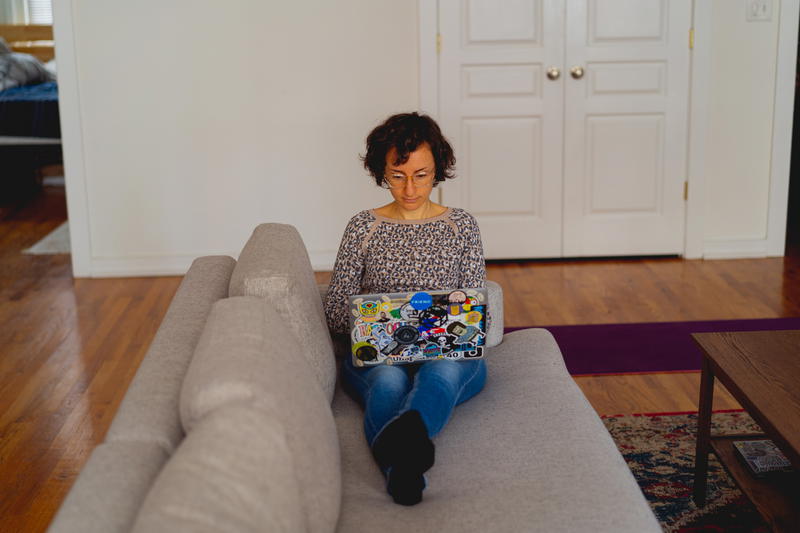
Get some tall plants
House plants add a lot of life and character to a home office. They also add more space for sound to go. Because plants take up some space, that’s less space for sound to bounce around in.
The actual plant and the soil help dampen the sound.
Taller plants have more surface area and are likely to work slightly better. I have a number of plants that I have positioned right near a window. They’re tall, and they grow fast. They also make my home office look more lived-in and permanent.
This won’t solve your problem entirely, but it will marginally help fix your echo problem. I consider getting plants to be a massive home office improvement.
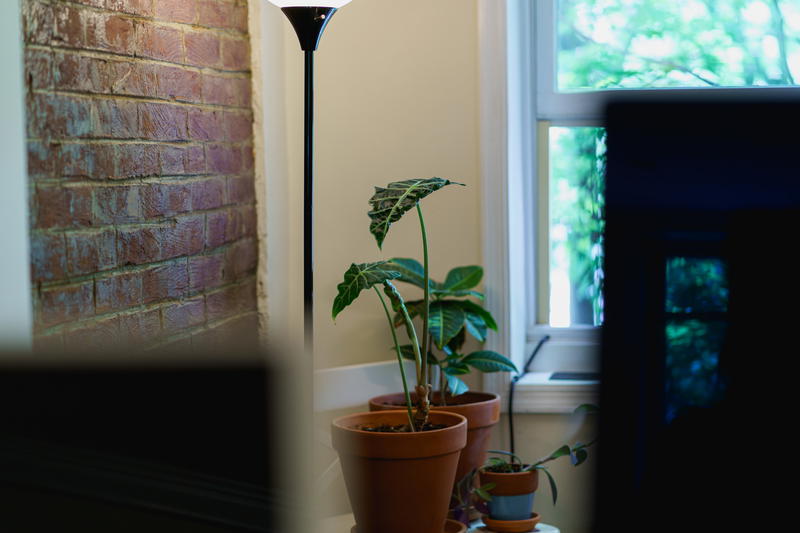
If you’re looking for a place to buy plants, I would try and find a local plant store near your home. A local plant store will be able to give you plant care advice and may help you pot a plant before you take it home. Buying local also means less transportation time for your plant.
You can also buy plants at IKEA and Home Depot. Home Depot has a generous plant return policy if you “accidentally” over or under water it.
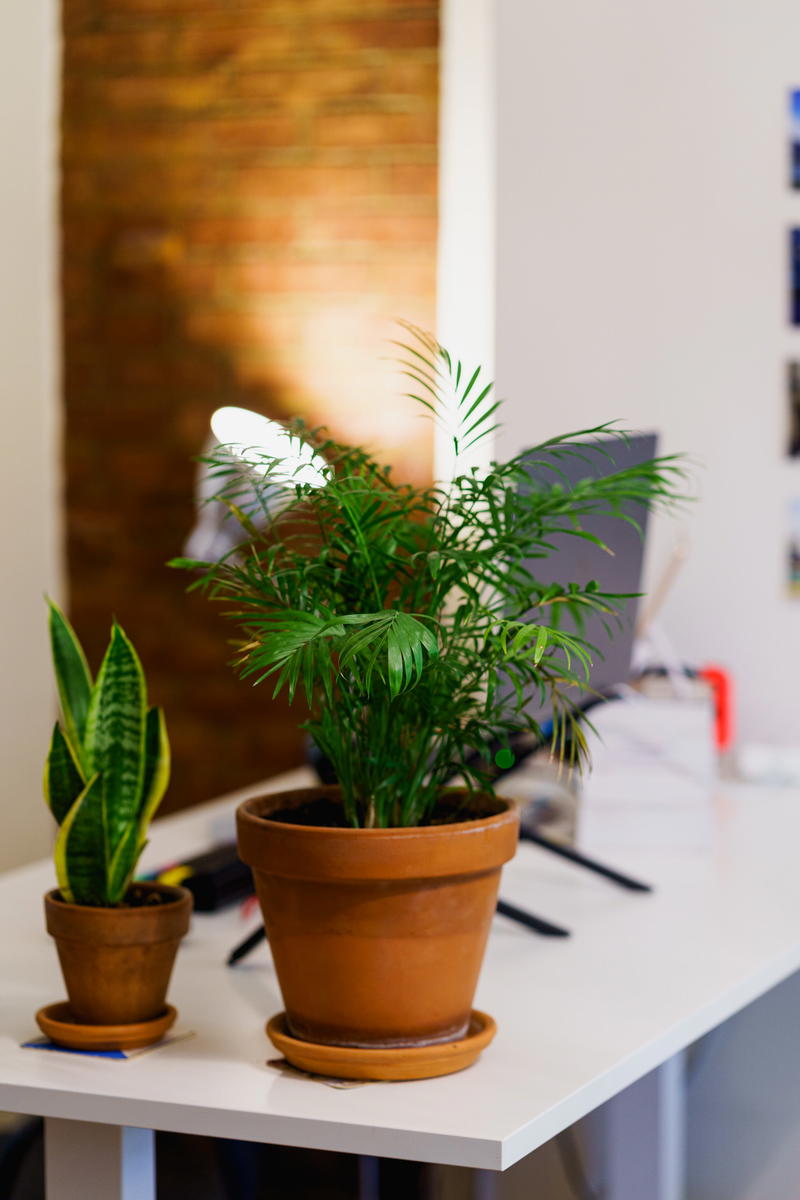
Hang canvas photos
Canvas photos will help dampen the sound because they will absorb some of the sound being bounced against your walls. You can position the photos strategically near where you sit, directly behind you and to the sides.
But because this is your home office, you can really feel free to put them wherever it makes sense!
I’m excited to try this option as well, because I would love to support other photographers, or print my own photography, and hang some of my favorite canvas prints.
We recommend Photowall for ordering your canvas prints. You can upload your own photos, or choose from the selection of great photos online.
If you know of photographers who you want to support, reach out to them, and see if they have a print store!
Add shelves with books and other objects
Shelves will effectively do the same thing as canvas photos. They will help block the sound being bounced against the walls.
Your goal is to create a lot of crevices in which the sound can get trapped.
A bonus of adding shelves is you can curate your perfect Zoom background. You can add some of your favorite books, add a small plant and some other little items that you enjoy.
Again, this is your office so make it yours!
Having moved so many times, I hesitate with investing in shelves. I’ve found that shelves typically work well in one spot on a wall. When you need to move, it’s hard to replicate that spot.
Once I know I have more of a long term living situation, shelves would absolutely be worth my time to install. Here are a few recommendations for shelves.

Use a dedicated microphone
As a way to make your echo sound better, you can use a standalone microphone. The microphone can help isolate your voice and reduce the overall echo sound.
You can also use the microphone on headphones and not use your computer speaker and microphone.
Use noise cancellation headphones
If the echo sound bothers you to listen to, you can take your virtual calls using noise cancellation headphones.
This is actually what I’ve been doing lately. I have the AirPod Pros and the noise cancellation is amazing.
When I hear my own voice, I sound muffled and I hear the person on the other end really clearly. I’ve asked, and my coworkers can’t really tell that my home office has an echo problem.
This isn’t a permanent solution, but it really does help in the short-term.
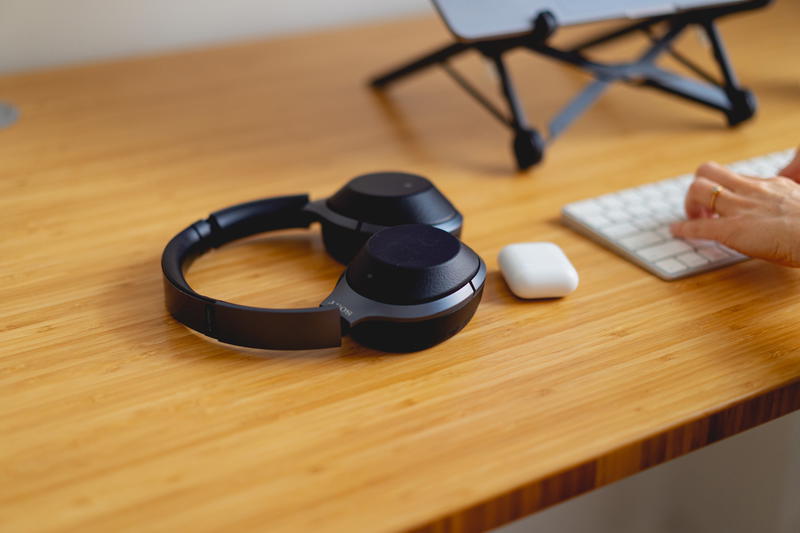
Use a small desk fan
Another way to help with the echo noise is to use a small fan or a white noise machine. I use the fan as a white noise machine, pretty much. And, I do like the air circulation.
I’ve found that the added noise distracts me from the echo sound. You’re creating more noise around you. You’re not fixing the problem with a fan or white noise machine, but you are effectively masking the problem.
Use sound panels
Sound panels aren’t for everyone, but they will certainly help. In my opinion, it’s way better to have functional furniture or art to help dampen the sound.
Sound panels would be something that you hang on the ceiling and walls to help dampen sound. This might even look cool if you’re working in a basement or a smaller room with an echo.
I can see how this may be useful to go on the wall closest to your desk, in these scenarios.
Additionally, if you’re in the business of podcasting or other creative fields in which you are recording your voice, you’ll probably want sound panels because you need everything you can get to reduce the echo in a room.
Fun fact: most people who podcast or record regularly will do it in a closet! This is because the clothes are the cheapest and best way to dampen the sound and produce good audio results.
Renovate a basement or garage
I was listening to a podcast (check it out!) and the host walks through his process for sound-proofing and finishing a basement.
It’s worth a listen, because it’s packed with tips and specific materials to check out.
I personally learned a lot listening to this, like what rockwool and alien tape are! You can get an idea of small improvements to make, like replacing your door, all the way up to fully renovating a raw space.
Most of the episode talks about sound-proofing, which will only help with an echo, given you’ve considered some of the advice above. The sound-proofing aspect goes the extra mile to ensure that sounds coming in and going out are as minimized as possible.
Move your office somewhere else
If you can, move your office to a less echoey spot. Maybe your house has a room with a carpet. Or, maybe a different room has more natural obstructions or fewer windows.
This isn’t an option for me, but given the space and flexibility of living in a bigger space, I would totally try this.
Understand where the echo is coming from
Because your room already has an echo, there’s probably not too much you can do to fix the room itself. That’s why the advice above is so valuable!
In the last apartment in which we used to work from home, the issue barely existed. That apartment, even when it didn’t have any furniture and carpets, already sounded good.
Sure, it echoed a little bit, but the minute we moved a couch and a carpet into the room, it fixed the issue immediately.
Here are some of the reasons that I believe our current apartment has more of an echo. If you’re designing a brand new space and building a room or addition, some of these considerations might be valuable to you.
High ceilings
I think some of the reason we’ve seen an increased amount of echoing is the ceilings in this current apartment are one or two feet higher. That creates a lot more space in which the sound can travel.
We’ve worked remotely from a place that must have had 20-foot high ceilings. The echo was really bad there. That echo was different. It always sounded more like we were in a big room, because, we were in one.
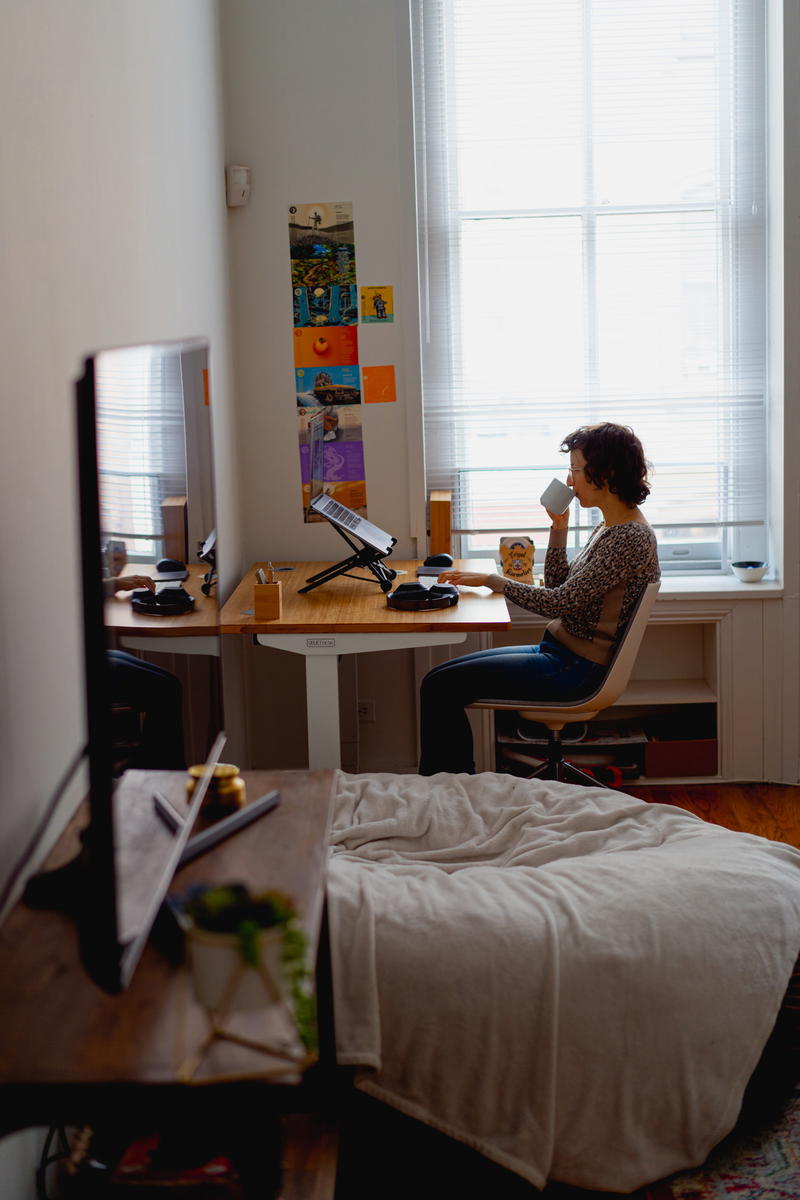
Hard reflective surfaces
Both apartments had standard drywall and fairly big windows. The differences that I believe caused an echo in our new apartment are the types of window blinds that we have.
Our last place had window shades, which I think naturally helped with the echo sound. Our current place has hard plastic (or are they wood?) blinds. I don’t believe that is helping the echo issue!
Our current floors are a hard wood-look plastic laminate material. The hard wood in our last place felt much softer and seems like it was absorbing sound quite a bit better.
Windows
Windows aren’t going to absorb the sound, no matter what you do. The sound comes right back at you because it has no where to go.
Floor-to-ceiling windows look nice, but they do cause a lot of echo in a room. Curtains are an easy way to help with dampening the sound. Softer window shades can also help!
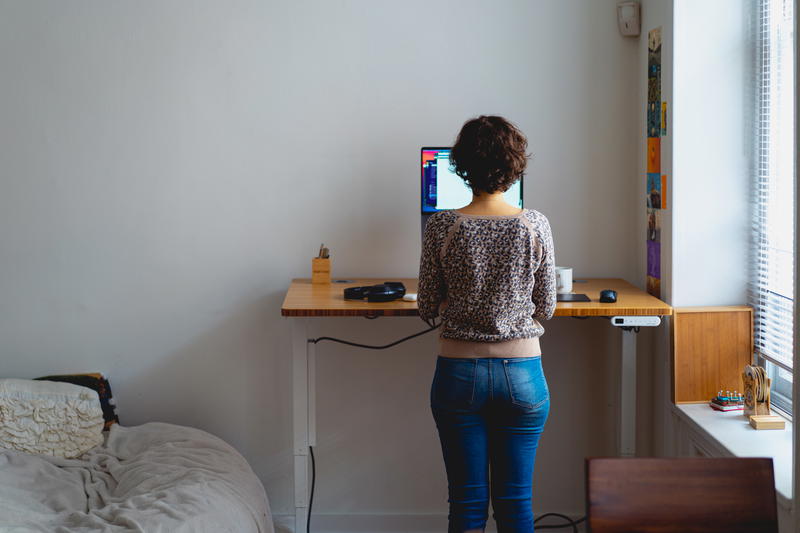
Low insulation
The reason we liked our last place so much was because of how well the apartment was insulated. The apartment kept heat in really nicely. It was great in the winter, but not so great in the summer.
I believe that the level and type of insulation really helped. You barely heard anyone above, below or to the side of you. You could have had a really noisy neighbor or a loud barking dog next door and you would never know.
Our current place doesn’t seem to have the same effect. We hear our neighbors all the time, walking above us, or walking down the hall. The doors everywhere seem thin, as well as the floors and walls, but at the end of the day, we have a lot more space. There’s always a trade-off, especially when you look for places to live in NYC.
Empty square or rectangular room with no natural obstructions
Our last place was fairly small and had a kitchen island that helped divide the living room from the kitchen. That likely helped with some of the natural noise cancellation as well, along with the real wood floors, and our high-pile carpet, like I mentioned above.
Our current place has a similar layout in the living room, and the living room doesn’t echo too much.
The office space, which is a big square, has no natural obstructions, so the sound can freely bounce off of all of the walls.

